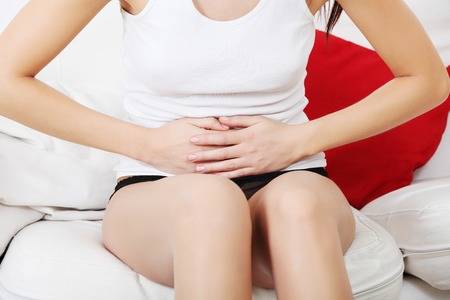Endometrial polyp is a growth of tissue that arises from the inner wall of the uterus called the endometrium. Overgrowth of cells in the lining of the endometrium leads to the formation of endometrial polyps. Endometrial polyps are common in women of childbearing age, but they can also occur in women who are undergoing menopause, as well as 35 to 40 years. These are generally not cancerous (benign), although some may be cancerous or eventually develop into cancer, which is known as precancerous polyps.
The size of the uterine polyp varies from a few millimeters to several centimeters. It can be the size of a sesame seed or as big as a golf ball.
The endometrial polyp causes abnormal uterine bleeding and can lead to infertility.
Cause
The exact cause of an endometrial polyp is unknown. Hormonal changes can play an important role. Endometrial polyp is said to grow in response to circulating estrogen hormones in women.
Risk factor’s
Certain risk factors can lead to the development of an endometrial polyp in a precancerous lesion that includes the following.
- Women of premenopausal or postmenopausal age.
- Women with a history of high blood pressure.
- Being overweight
- Women on medication for breast cancer (taking tamoxifen).
Signs and symptoms
A woman with an endometrial polyp notices the following signs and symptoms:
- Irregular menstrual bleeding, women may have frequent and unpredictable menses of variable length and heaviness
- Bleeding may be seen between menstrual periods (spotting of the vagina)
- Vaginal bleeding may be seen after menopause.
- Women with endometrial polyp may have difficulty conceiving.
- Women who notice any of the above symptoms should see a gynecologist without delay.
The polyp can act as a foreign body and can affect implantation (that is, the attachment of the embryo to the uterus) and cause infertility.
Diagnosis:
TVS: Polyps are diagnosed by a transvaginal ultrasound performed in the first half of the menstrual cycle when the bleeding has completely stopped.
Sonohysterography: Where saline is inserted into the uterine cavity through a catheter and a transvaginal examination is performed to see the polyp hanging in the fluid within the cavity.
Hysteroscopy: II is the insertion of the telescope into the uterus through the vagina and has a panoramic view of the uterus.
Treatment
The non-cancerous polyp that shows no symptoms does not require treatment. You must wait and see if it goes away on its own. The doctor may recommend certain medications, such as progesterone, that will help control hormone levels.
If a very small polyp can scratch endometrial using an OPD pipette and take an endometrial biopsy. But premenopausal and postmenopausal women should undergo D&C and tissue sent to histopathology to rule out any precancerous changes.
Women with endometrial polyp cannot conceive and may undergo removal of the polyp to treat infertility. The removal of hysteroscopic polyps is recommended and the tissue is sent for a histopathological examination. At the same time, endometrial scratching is done to help new healthy tissue growth.
Therefore, the diagnosis of endometrial polyps and treatment is very essential in infertility treatment.
Follow Us

Add Your Comment